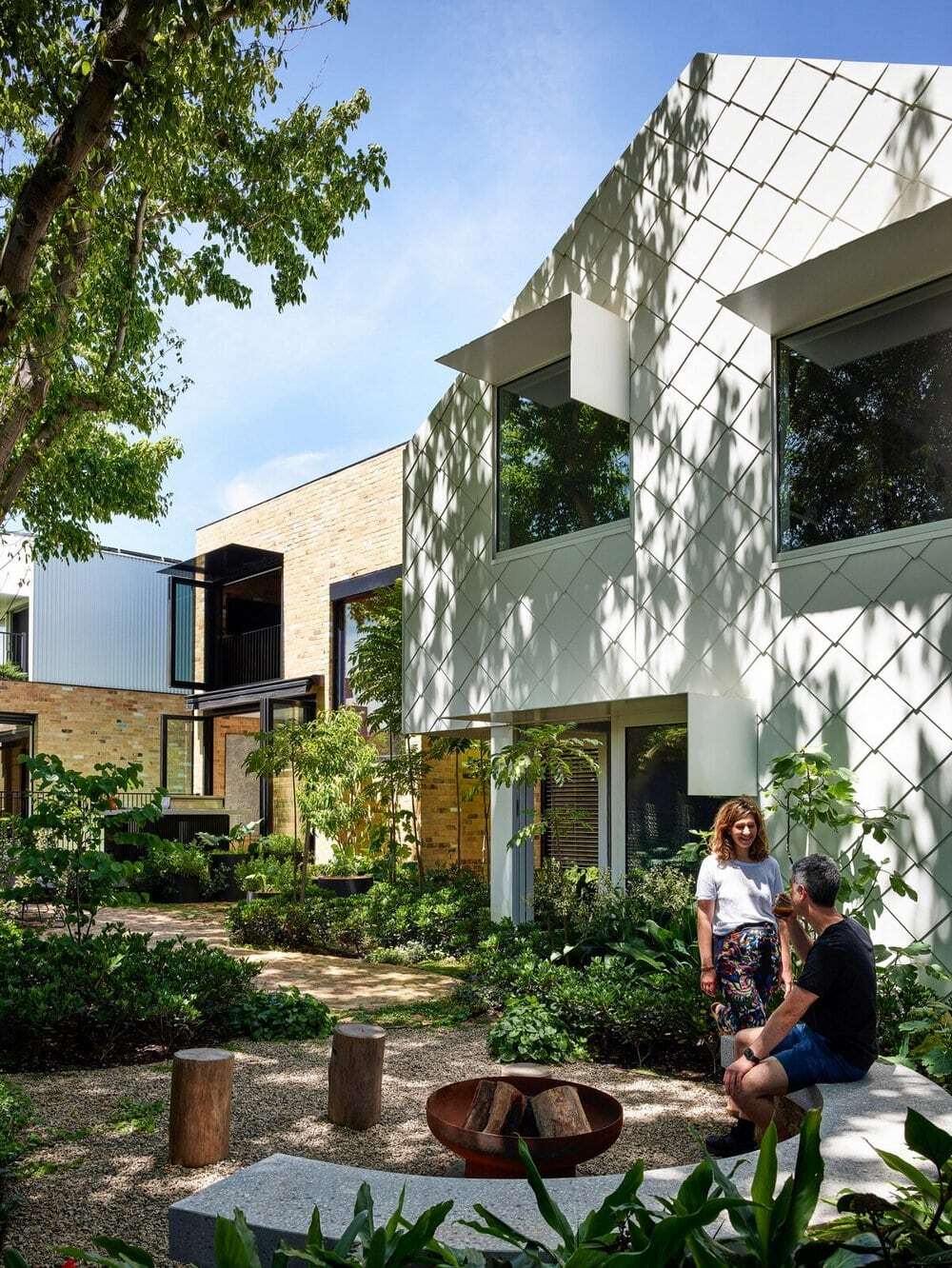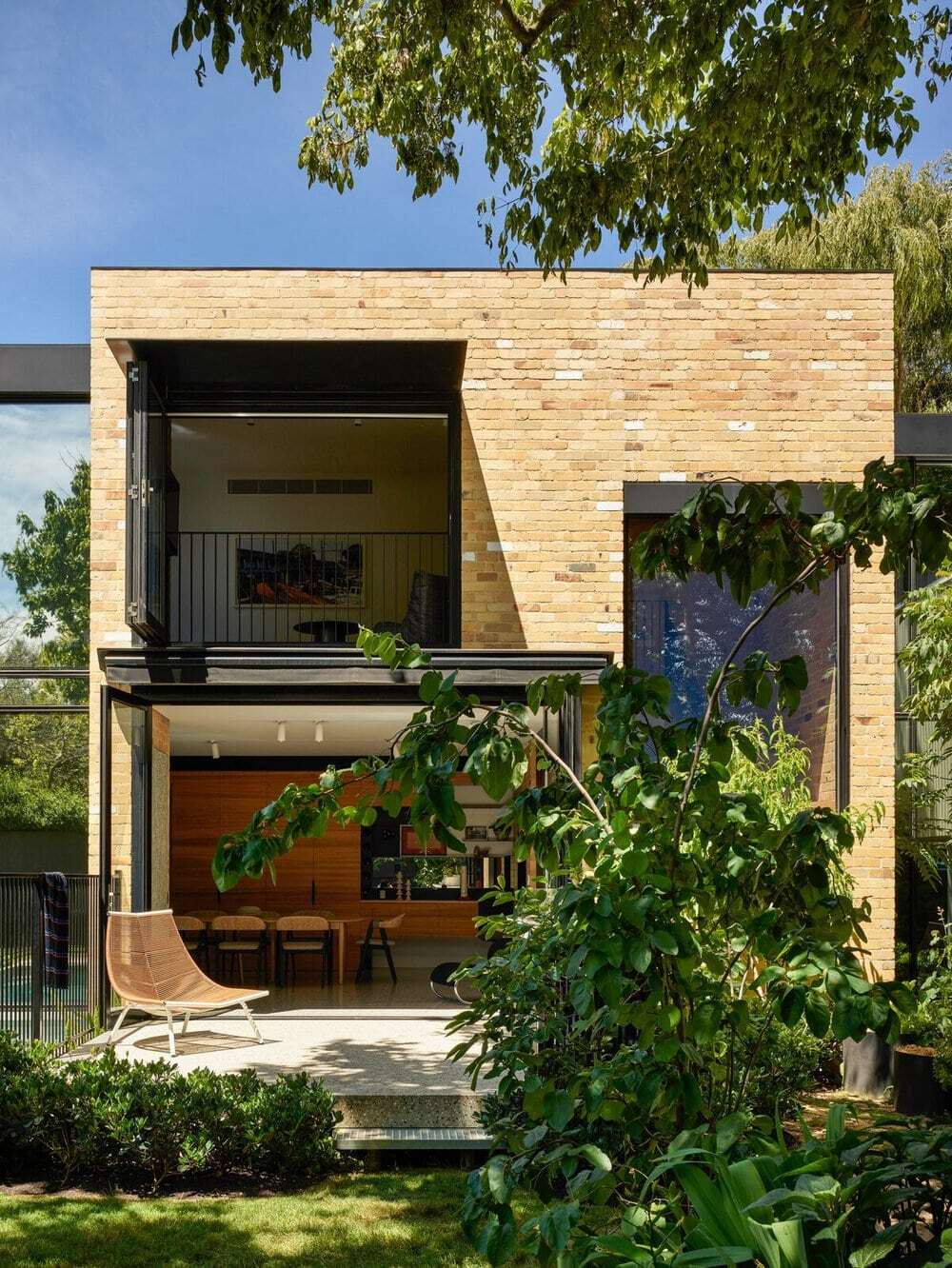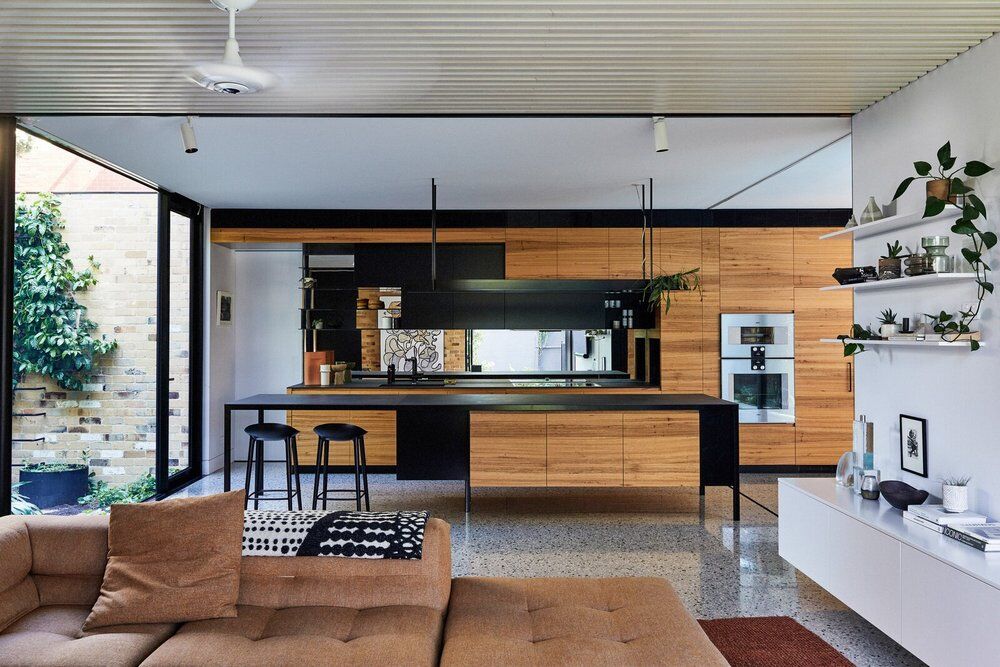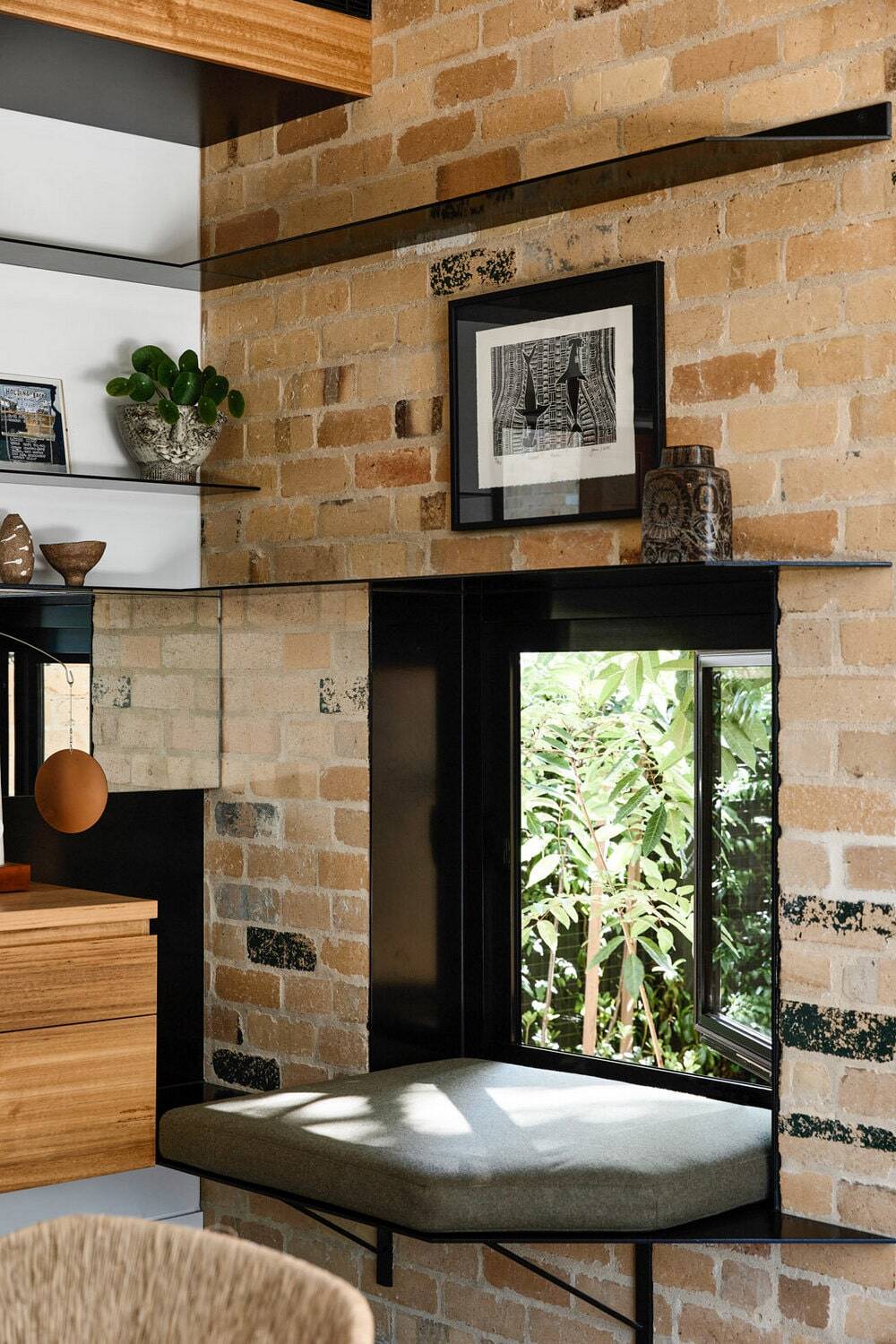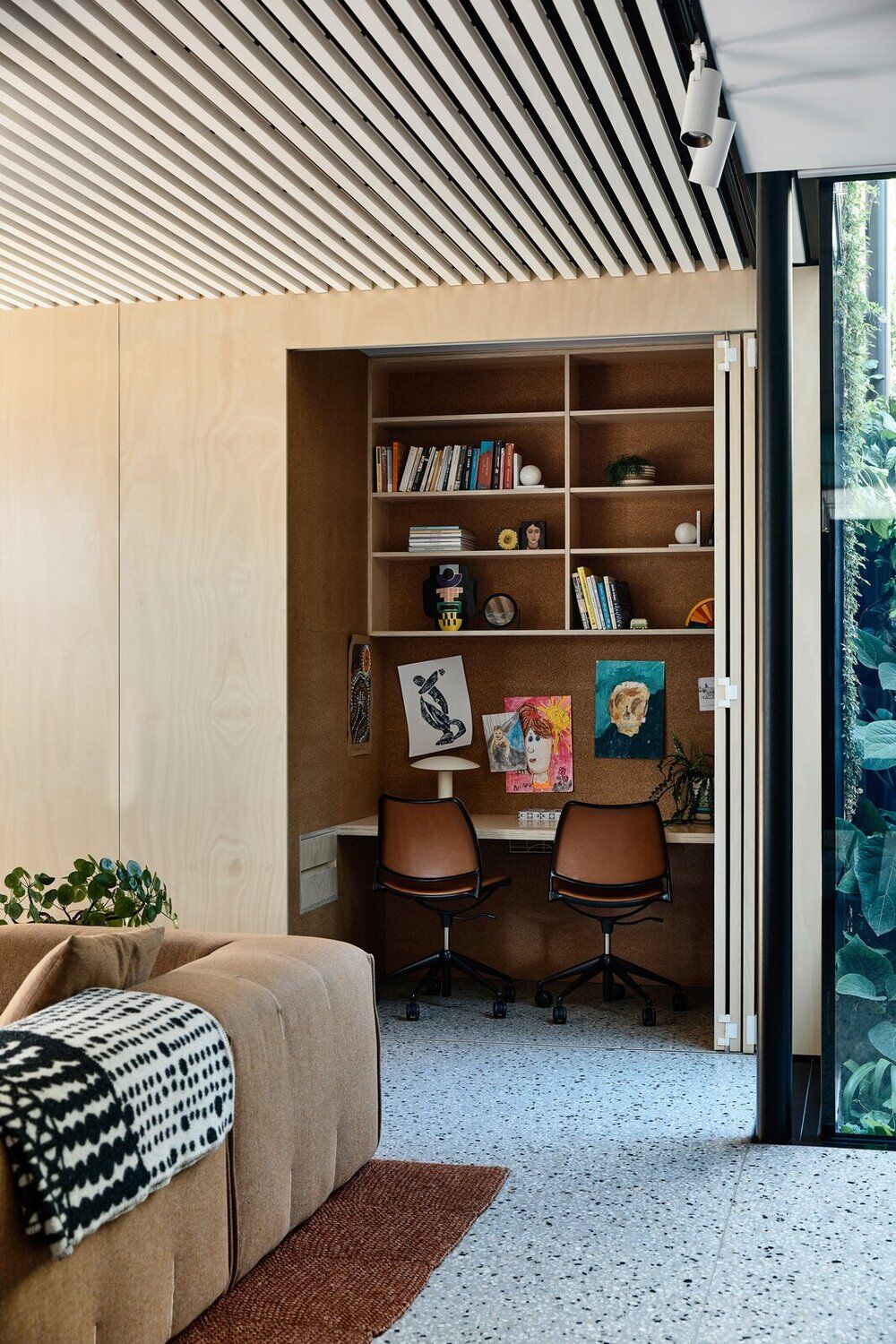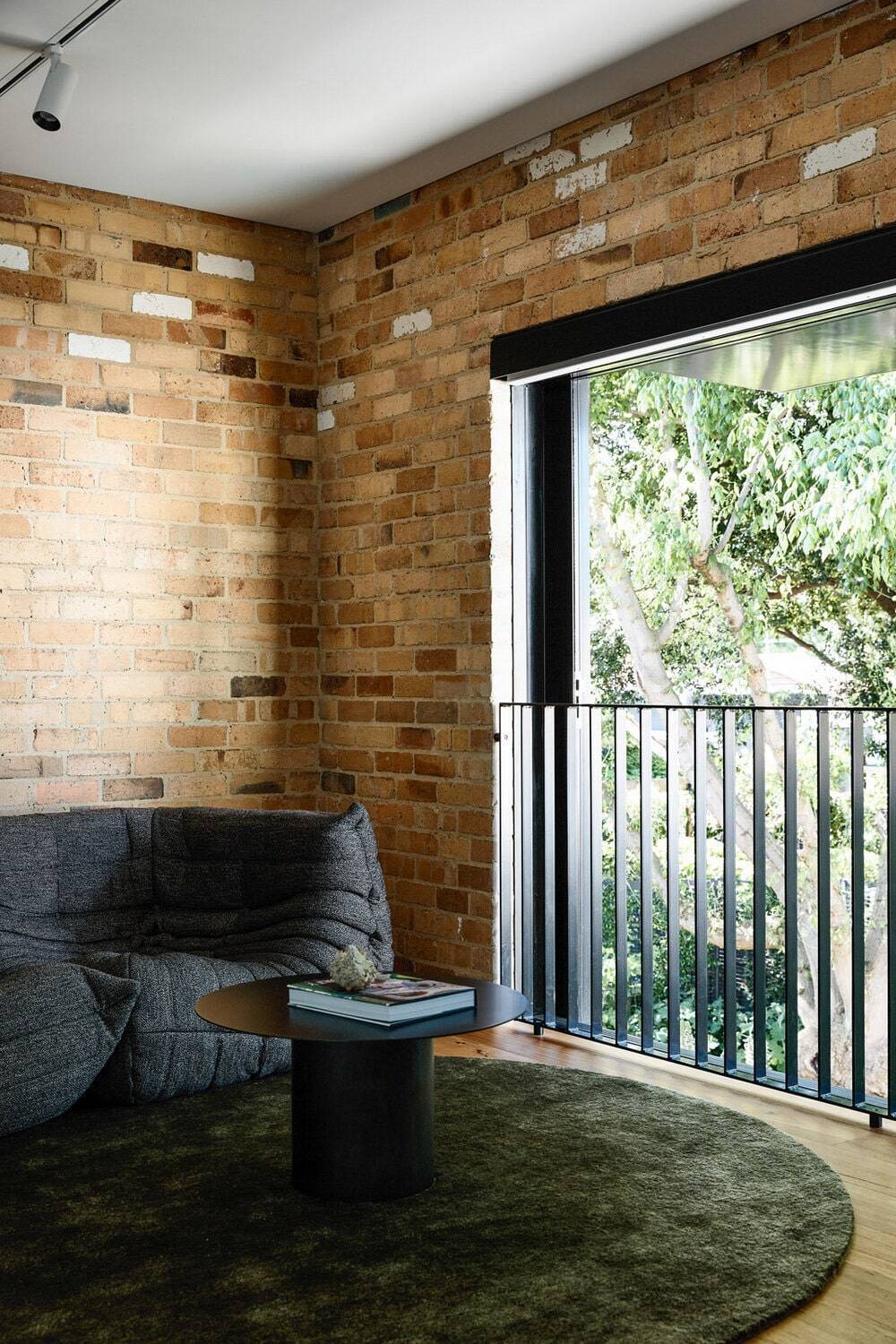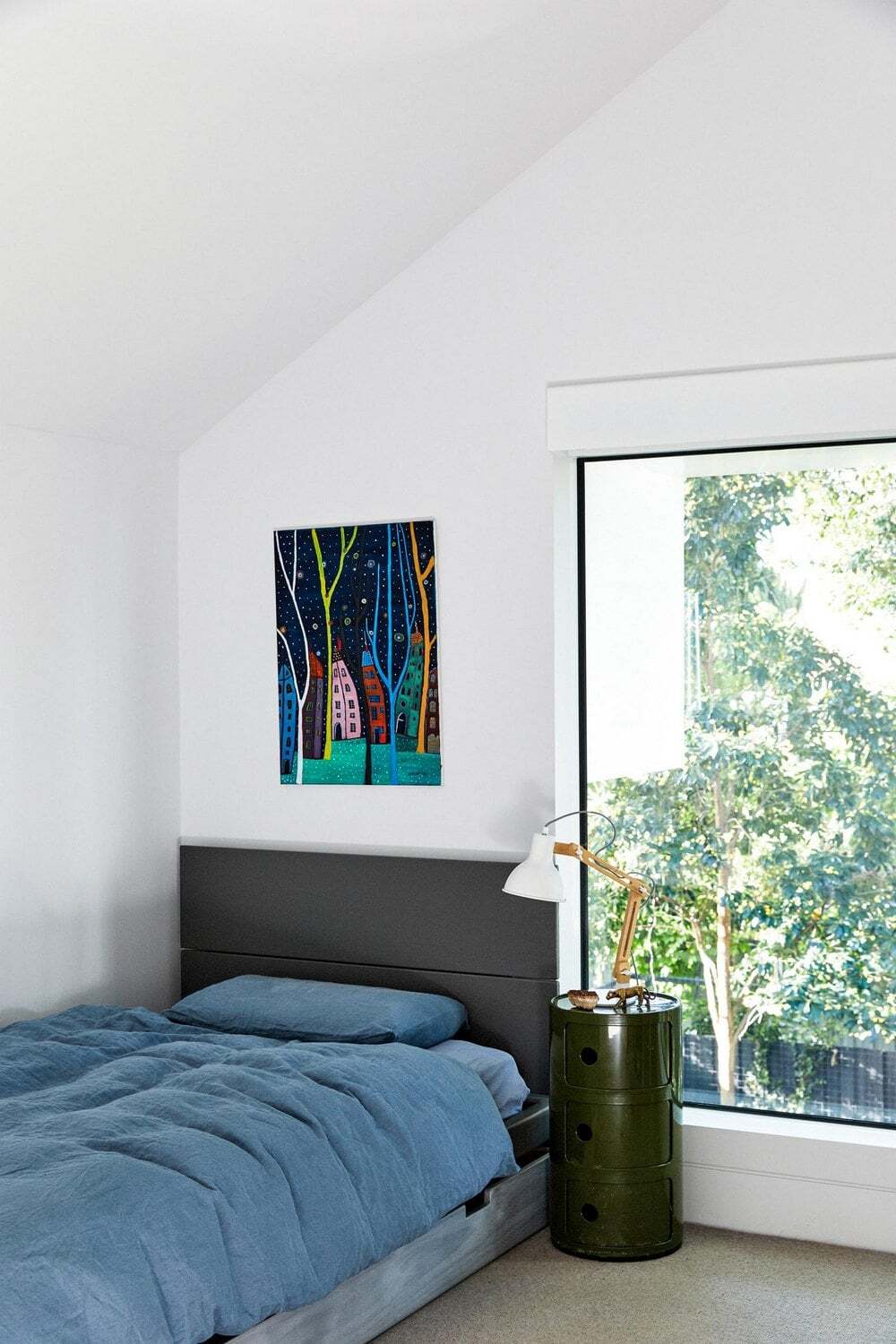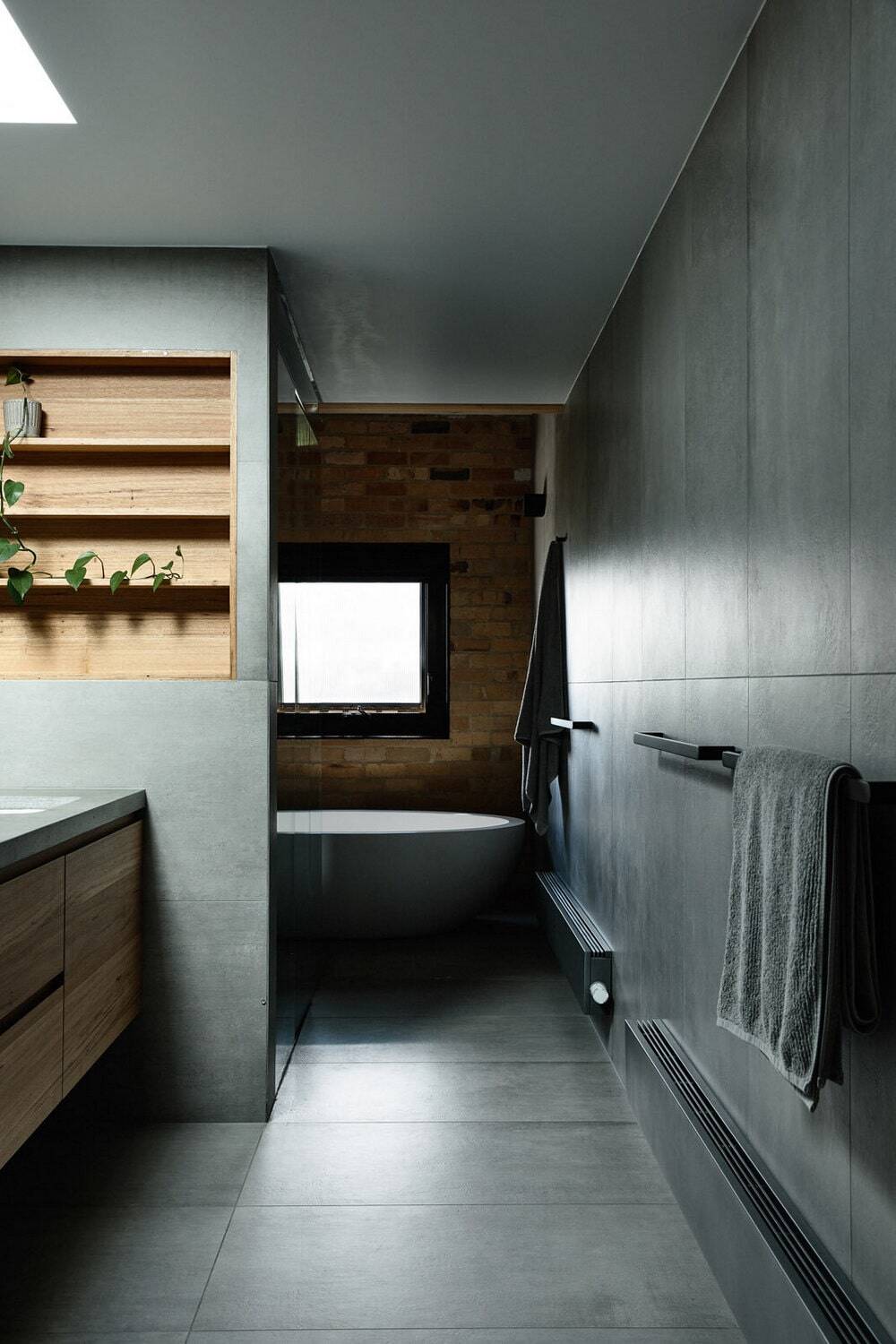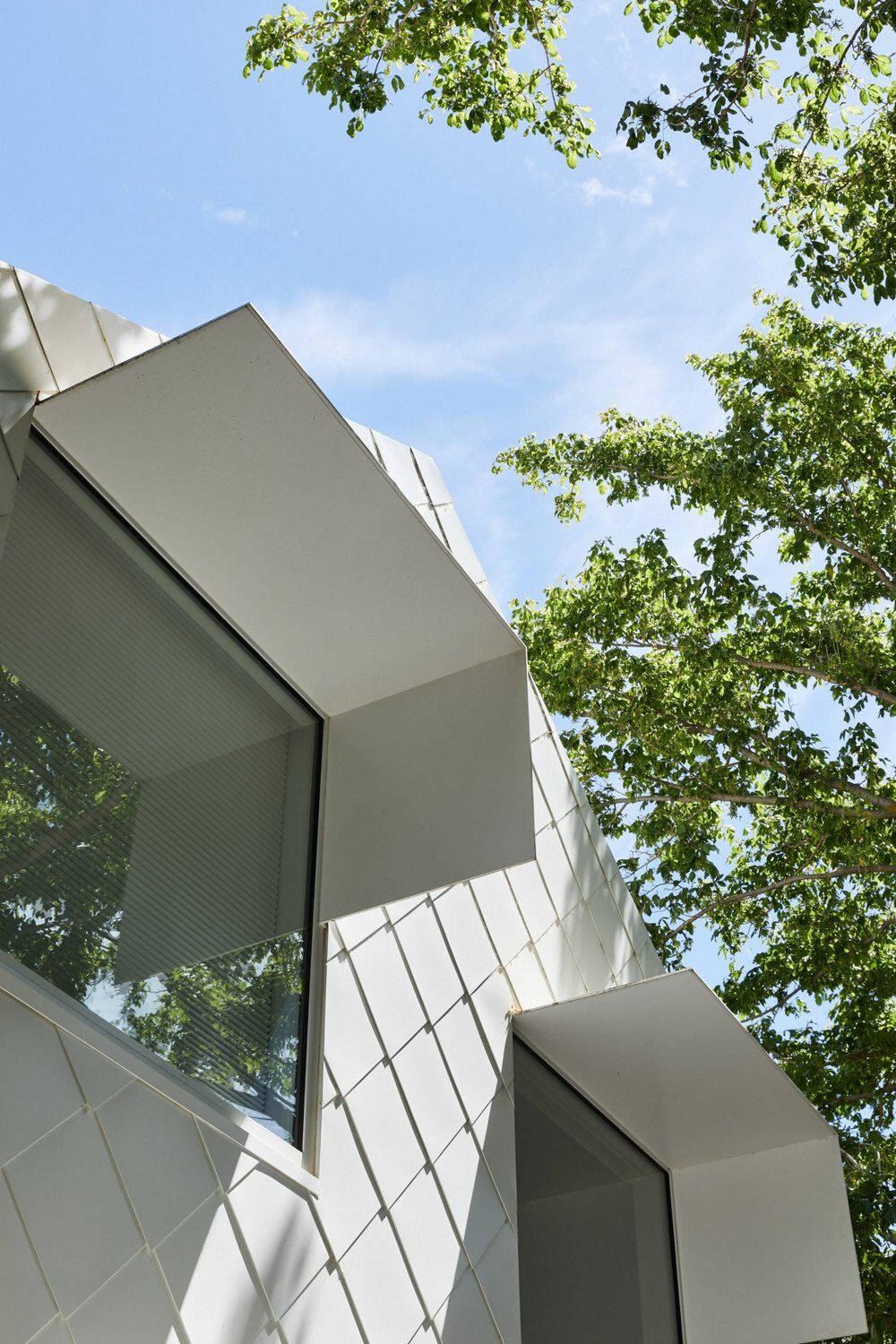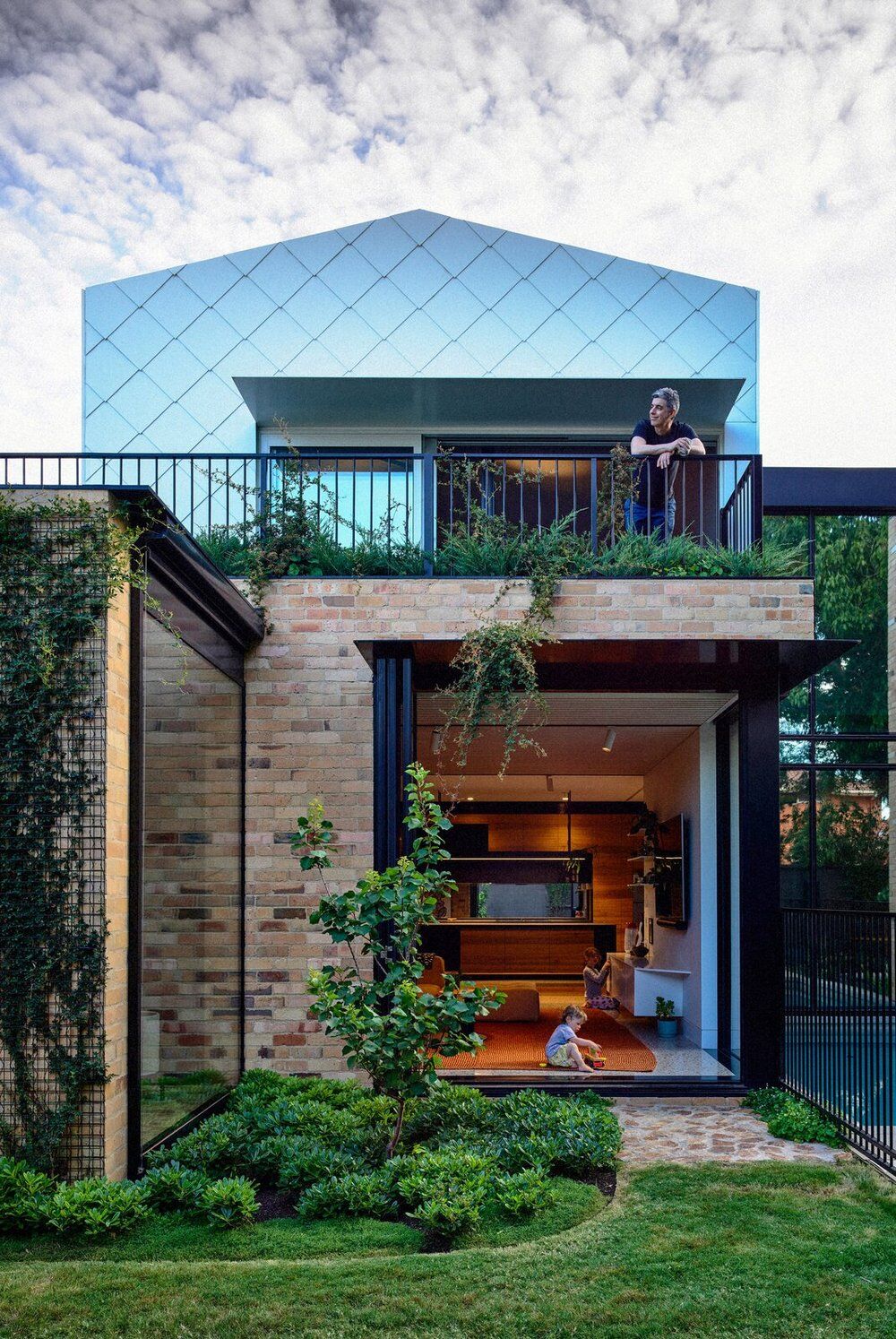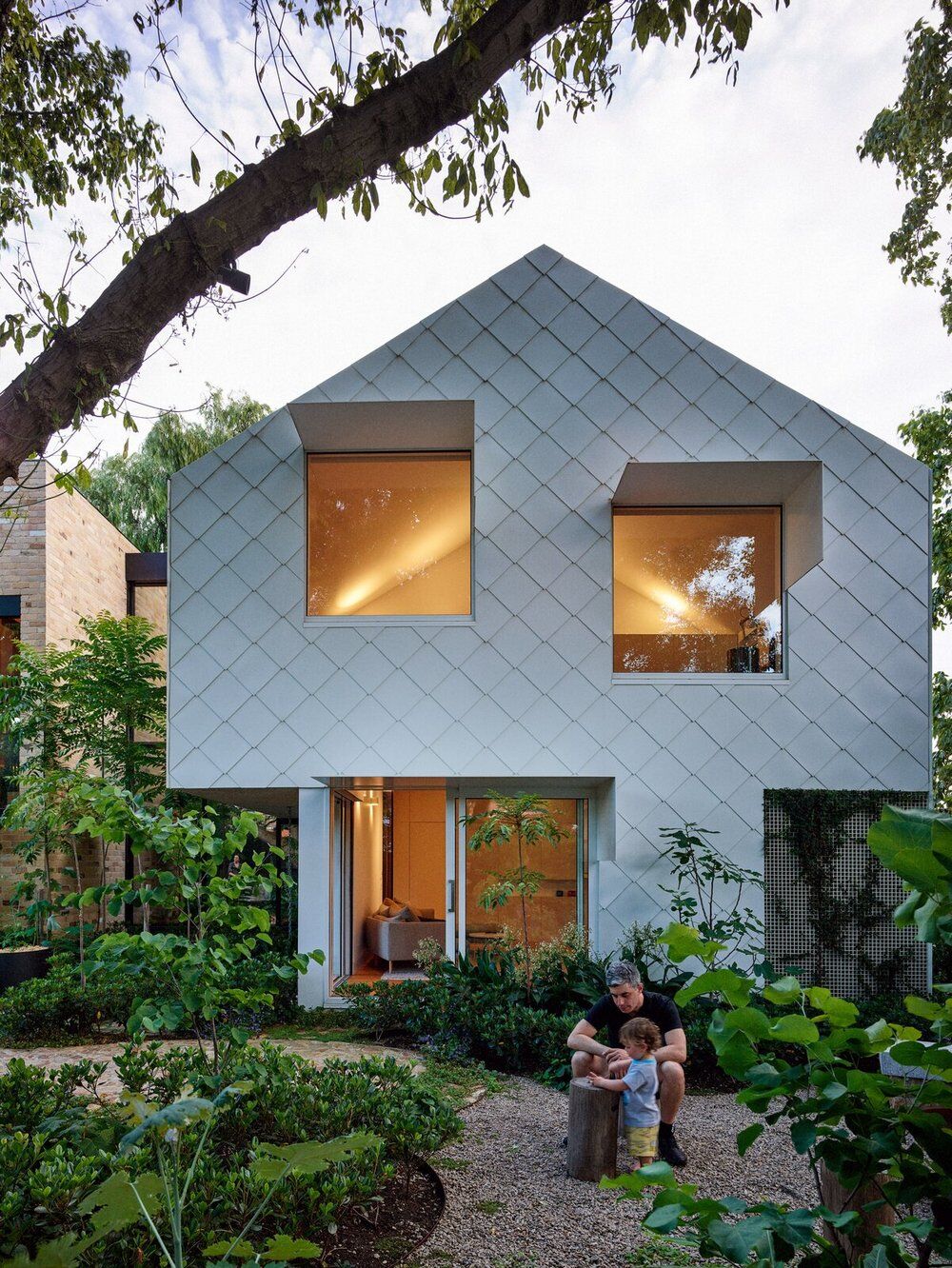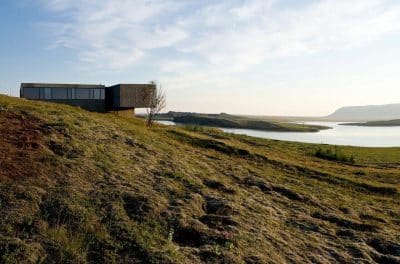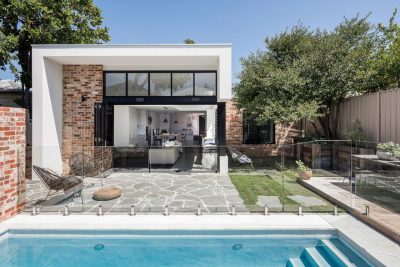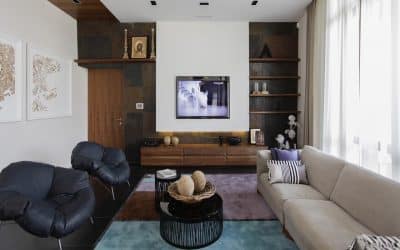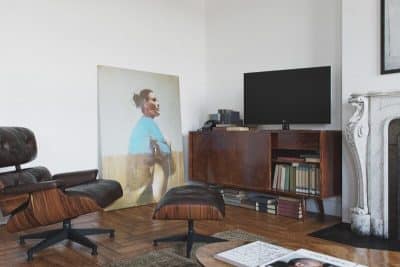Project: Sustainable Garden House
Architects: Austin Maynard Architects
Project Team: Andrew Maynard, Mark Austin, Ray Dinh
Interior Design & Styling: Simone Haag
Contractor / Builders: Sargant Construction
Engineer: Hive Engineering
Landscape Design Architect: Eckersley Garden Architecture
Building Surveyor: Code Compliance
Energy Consultants: Cundall
Home Automation: Urban Intelligence
Lighting Consultant: Lights and Tracks
Swimming Pools: Out From The Blue
Location: Melbourne, Australia
Area: 535 m2
Year: 2020
Photos by Derek Swalwell
Text by Austin Maynard Architects
The average Australian house uses 19kwh of energy per day. Sustainable Garden House produces 100kwh per day and has a 26kwh Tesla battery. A high-performing, hi tech, inner-city oasis, Garden House is our most sustainable home yet.
More than just a house, Sustainable Garden House is a power station, pushing far more sustainable energy back into our shared energy grid than it uses. This is the future of sustainable energy. Electrified homes, powered by the sun, powering our shared energy grid.
The owners came to us with a highly detailed and specific brief. They wanted a sustainable, super modern, longterm family home, that could change and adapt over time. They had a fantastic and unusual block. Facing the street was a tired, single-fronted cottage with a 1980s addition at the rear that opened out onto a surprising, large private garden. Self-professed “kind of quirky types” the owners asked us to think outside the square house box, save as much of the garden as possible and build a ‘homely’ multifunctional and sustainable family house.
Located on a long and narrow street, lined with long and narrow blocks, in inner-city Melbourne, Sustainable Garden House is an unexpected oasis. Hidden from the street and accessed via a pedestrian laneway, this new family home sits within lush established greenery. Designed for a family of five with the capacity to regularly entertain dozens of people, the home comprises of four distinct elements appearing as separate buildings, ‘invisibly’ connected via mirrored glass corridors that reflect the well established garden.
A two-car garage and workshop faces to the street, with an all purpose rumpus room behind and home office above. Living/ dining / kitchen (with hidden pantry and laundry) open out to the garden. The main bedroom has an ‘open balcony’ lounge area and ensuite while the children have a dedicated space, with three bedrooms, two bathrooms, a TV room and a netted play-stair.
By nature of its location and by design, Garden House belies its size and scale. At street-view the shingled, simple and domestic scale garage appears to be the house, in its entirety. A pretty, white shingled cottage with a perfect pitched roof. Walk down the side pedestrian alleyway and the main front door opens up to reveal a much bigger property concealed within – like discovering Narnia at the end of a literal yellow brick road.
The owners cited our 2015 project Tower House as inspiration. They liked the way we dealt with visual bulk, by breaking down the home into smaller components. They wanted a home that allowed for large scale entertaining, space for their three children to grow up and a dedicated office/conference room, but they didn’t want the feeling of a big house.
So the challenge was: How do you design a home big enough to accomodate a large family and yet not have it look like a large family home. How do you keep an intimate personal scale but then be able to have the flexibility of suddenly being full of people?
The response was to break up the bulk of the house into four smaller scale zones, office, kitchen/living, dining and kids area – with smart interactions. Each zone is connected via mirrored glass links or bridges, reflecting the garden and essentially making them disappear – giving the impression of four separate buildings, set within lush greenery. Internally there are concealed doors allowing for spaces to be opened up or sealed off (between kitchen and dining, and the staircase and kids zone). Large openings connect the inside with the garden, with seasonal outdoor spots such as the fire pit, shaded outdoor table, sunny lawn and heated pool.
“Our home doesn’t feel too huge, it feels homely and cosy. It’s like a little eco system, the more people the more sense it makes. It’s a multitasking house, doing four things at the same time. There’s logical space for it and it all works.” The owners
The initial sketches of Sustainable Garden House were dictated by the random siting of three significant trees. The proposition was to save the trees, and as much of the establish plant-life as possible, whilst maximising passive solar gain and northern outlook by building along the southern boundary. With the guidance of an arborist and detailed surveys of tree root zones and trunk dimensions, the structural solution evolved. Garden House is not simply built around the trees, but, in places, suspended – hovering above ground to protect tree root zones.
Working around the trees resulted in a re-thinking of the typical circulation path. Quite often when designing there is one main path through the home and everything branching off it. At Sustainable Garden House there is a more complex type of circulation borne out of saving trees. Without a defined circulation spine, the garden becomes the reference and orientation point.

